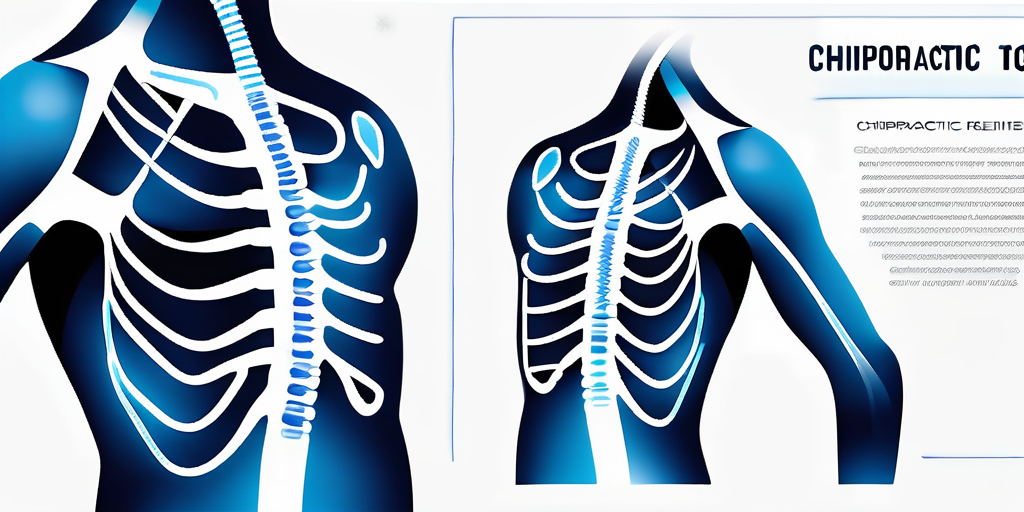Frozen shoulder, also known as adhesive capsulitis, is a condition that can significantly limit shoulder movement and mobility. Fortunately, chiropractic care can provide effective treatment and relief for individuals suffering from frozen shoulders. Chiropractors can use specialized chiropractic techniques, such as spinal and joint adjustments, to help improve shoulder mobility, reduce pain, and promote healing.
Understanding Frozen Shoulder: Causes and Symptoms
Frozen shoulder, also known as adhesive capsulitis, is a debilitating condition that affects the shoulder joint, causing stiffness and inflammation in the surrounding tissues. Medical experts remain unsure of the exact cause, but research suggests that it may be triggered by a combination of factors, including hormonal imbalances, autoimmune responses, and genetic predisposition.
While anyone can develop a frozen shoulder, certain risk factors can increase the likelihood of experiencing this condition.
Individuals between the ages of 40 and 60, particularly women, are more susceptible to developing frozen shoulder. This demographic group often experiences hormonal changes that can affect the integrity of the shoulder joint.
Moreover, individuals with underlying medical conditions such as diabetes, thyroid disorders, or previous shoulder injuries are at a higher risk of developing a frozen shoulder. These medical conditions can contribute to the inflammation and stiffness that characterize this debilitating condition.
The primary symptoms of a frozen shoulder typically manifest as pain, stiffness, and a restricted range of motion in the affected shoulder. In the early stages, individuals may notice mild discomfort and difficulty performing daily tasks that involve shoulder movements, such as reaching for objects or getting dressed.
As the condition progresses, the shoulder joint becomes increasingly rigid, making simple actions like reaching overhead or behind the back challenging and painful.
The Benefits of Chiropractic Care for Frozen Shoulders
Chiropractic care offers several benefits for individuals with frozen shoulder. One of the primary advantages is pain relief. Chiropractors can use various techniques, such as spinal adjustments and soft tissue therapies, to alleviate shoulder pain. These hands-on treatments help reduce inflammation and restore proper joint function, decreasing pain and discomfort.

In addition to pain relief, chiropractic care aims to improve shoulder mobility and range of motion. Chiropractors employ gentle adjustments and manipulations to realign the spinal and shoulder joints, reducing restrictions and enhancing flexibility. By restoring proper alignment and joint function, chiropractic care can help individuals regain their ability to perform daily activities without pain or limitation.
Furthermore, chiropractic care for frozen shoulders often includes personalized exercise programs to strengthen the muscles surrounding the shoulder joint. These exercises can help improve shoulder stability and support, prevent future injuries, and promote long-term recovery. Chiropractors may also provide guidance on proper posture and ergonomics to reduce shoulder joint strain and prevent symptoms’ exacerbation.
Another key aspect of chiropractic care for frozen shoulders is patient education. Chiropractors work closely with individuals to educate them on lifestyle modifications, such as proper nutrition and hydration, that can support overall joint health and function. By empowering patients with the knowledge and tools to take an active role in their recovery, chiropractors facilitate a comprehensive approach to managing frozen shoulders and promoting optimal well-being.
Key Chiropractic Techniques for Treating Frozen Shoulder
Chiropractors utilize specific techniques to treat frozen shoulders effectively. One widely used method is spinal and joint adjustments. These adjustments involve a chiropractor applying controlled force to the affected joint, encouraging it to move in the desired direction. Spinal adjustments help improve shoulder biomechanics and restore normal joint function, relieving pain and stiffness.
Another valuable chiropractic technique for frozen shoulder is soft tissue therapy. This technique massages and stretches the muscles, ligaments, and tendons surrounding the shoulder joint. By targeting the soft tissues, chiropractors can reduce muscle tension, improve blood flow, and promote healing. Soft tissue therapy also helps improve overall shoulder mobility and flexibility.
In addition to spinal adjustments and soft tissue therapy, chiropractors may incorporate rehabilitative exercises into their treatment plans for frozen shoulders.
These exercises are designed to strengthen the muscles supporting the shoulder joint, improve range of motion, and enhance stability. By combining chiropractic adjustments with targeted exercises, patients can experience more comprehensive and long-lasting relief from frozen shoulder symptoms.
Furthermore, chiropractors may recommend lifestyle modifications and ergonomic adjustments to help prevent future episodes of frozen shoulder. These recommendations may include proper posture techniques, ergonomic workstation setups, and specific exercises to maintain shoulder health.
Chiropractors aim to address lifestyle factors to treat and prevent frozen shoulder.
How Spinal and Joint Adjustments Improve Shoulder Mobility
Spinal and joint adjustments are crucial in improving shoulder mobility for individuals with frozen shoulders. When the spine and shoulder joints are misaligned or restricted, compensatory movements and poor biomechanics can result in additional stress on the shoulder joint and exacerbate the symptoms of a frozen shoulder.
By performing spinal adjustments, chiropractors can restore proper alignment and relieve stress on the shoulder joint. This realignment reduces pain and allows for improved shoulder function and a wider range of motion. Additionally, joint adjustments help loosen tight muscles and ligaments, further enhancing shoulder mobility.
Furthermore, spinal adjustments can positively impact nerve function, which plays a significant role in shoulder mobility. The nerves controlling the shoulder joint muscles originate from the spine.
Misalignments in the spine can impair these nerves, leading to decreased communication between the brain and the shoulder muscles. By correcting these misalignments, chiropractors can help restore optimal nerve function, allowing for better coordination and control of shoulder movements.
In addition to spinal and joint adjustments, chiropractors may incorporate soft tissue techniques to address muscular imbalances contributing to limited shoulder mobility.
By targeting specific tight or weak muscles, chiropractors can help improve muscle strength and flexibility around the shoulder joint. This approach targets spinal and joint issues and emphasizes optimizing muscle function for long-term shoulder health.
The Role of Chiropractic in Pain Relief and Recovery
Chiropractic care plays a significant role in pain relief and recovery for individuals with frozen shoulder. Unlike medications, which only provide temporary pain relief, chiropractic treatments target the root cause of the problem. By addressing spinal misalignments and joint restrictions, chiropractors can alleviate pain and improve overall shoulder function.
Furthermore, chiropractic care promotes natural healing and recovery. Through adjustments and soft tissue therapies, chiropractors stimulate the body’s healing mechanisms, allowing damaged tissues to repair and regenerate. This natural approach provides long-term relief and minimizes the risk of side effects commonly associated with medications or invasive procedures.
It is important to note that chiropractic care is not limited to pain relief. Chiropractors take a holistic approach to health, focusing on the body rather than just individual symptoms. Chiropractic adjustments can enhance overall well-being and help prevent future injuries by improving spinal alignment and nervous system function.
Additionally, chiropractors often provide lifestyle and ergonomic advice to their patients. This guidance can help individuals make positive changes in their daily habits, posture, and movement patterns, further supporting their recovery and reducing the likelihood of recurring issues. Chiropractors empower patients for long-term pain relief and improved quality of life.
Integrating Chiropractic Care with Physical Therapy
Integrating chiropractic care with physical therapy can further enhance the benefits of treatment for frozen shoulders. Physical therapy exercises and stretches prescribed by chiropractors can help strengthen the shoulder muscles and improve joint stability. Combined with chiropractic adjustments, these exercises create a comprehensive treatment approach that addresses the underlying issues and the rehabilitation process.
Physical therapy can also help individuals maintain improved shoulder mobility and prevent future injuries or recurrences of frozen shoulders. Patients can optimize their recovery and long-term shoulder health by continuing with prescribed exercises and incorporating proper posture and body mechanics.
Moreover, integrating chiropractic care and physical therapy can provide a holistic approach to treating frozen shoulders. Chiropractors focus on spinal alignment and nerve function, which can impact shoulder health and function. By addressing any spinal misalignments contributing to shoulder issues, chiropractors can help improve overall body mechanics and reduce strain on the shoulder joint.
This collaborative approach between chiropractic care and physical therapy targets the symptoms of a frozen shoulder. It aims to address the root cause of the issue, leading to more effective and long-lasting results for patients. Combining these two complementary therapies allows individuals to experience a more comprehensive and personalized treatment plan tailored to their needs and goals.
Frequently Asked Questions About Chiropractic Care for Frozen Shoulder
1. Can chiropractic care ultimately cure frozen shoulder?
While chiropractic care can significantly relieve frozen shoulders, a complete cure depends on individual conditions and treatment responses. It aims to reduce pain, improve mobility, and promote healing, although recovery varies by person.
Frozen shoulder, or adhesive capsulitis, involves shoulder joint stiffness and pain. Chiropractic care manages symptoms by correcting joint dysfunction and muscle imbalances. Manual adjustments, soft tissue therapy, and exercises help restore shoulder motion and function.
2. Is chiropractic care safe for all individuals with a frozen shoulder?
Chiropractic care is generally safe for most individuals with frozen shoulders. However, it is essential to consult with a qualified chiropractor who can assess your specific condition and determine the best course of treatment. Chiropractors are trained to adapt their techniques to suit each individual’s needs, ensuring safe and effective care.
Furthermore, chiropractors take a comprehensive approach to frozen shoulder treatment, considering the shoulder joint and the spine, nervous system, and overall musculoskeletal health. By addressing any underlying issues contributing to shoulder dysfunction, chiropractors can help improve the body’s ability to heal and recover from a frozen shoulder.
Chiropractic care offers a holistic and noninvasive approach to treating frozen shoulders. Using specialized techniques like spinal and joint adjustments, chiropractors can alleviate pain, improve shoulder mobility, and promote natural healing. Integrating chiropractic care with physical therapy further enhances the benefits and supports long-term shoulder health. If you’re suffering from a frozen shoulder, consult a chiropractor to explore the potential benefits of chiropractic care in your recovery journey.



